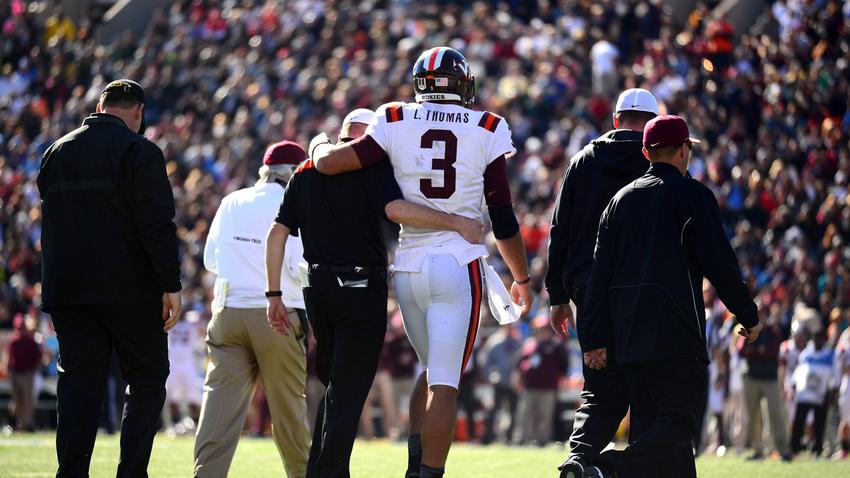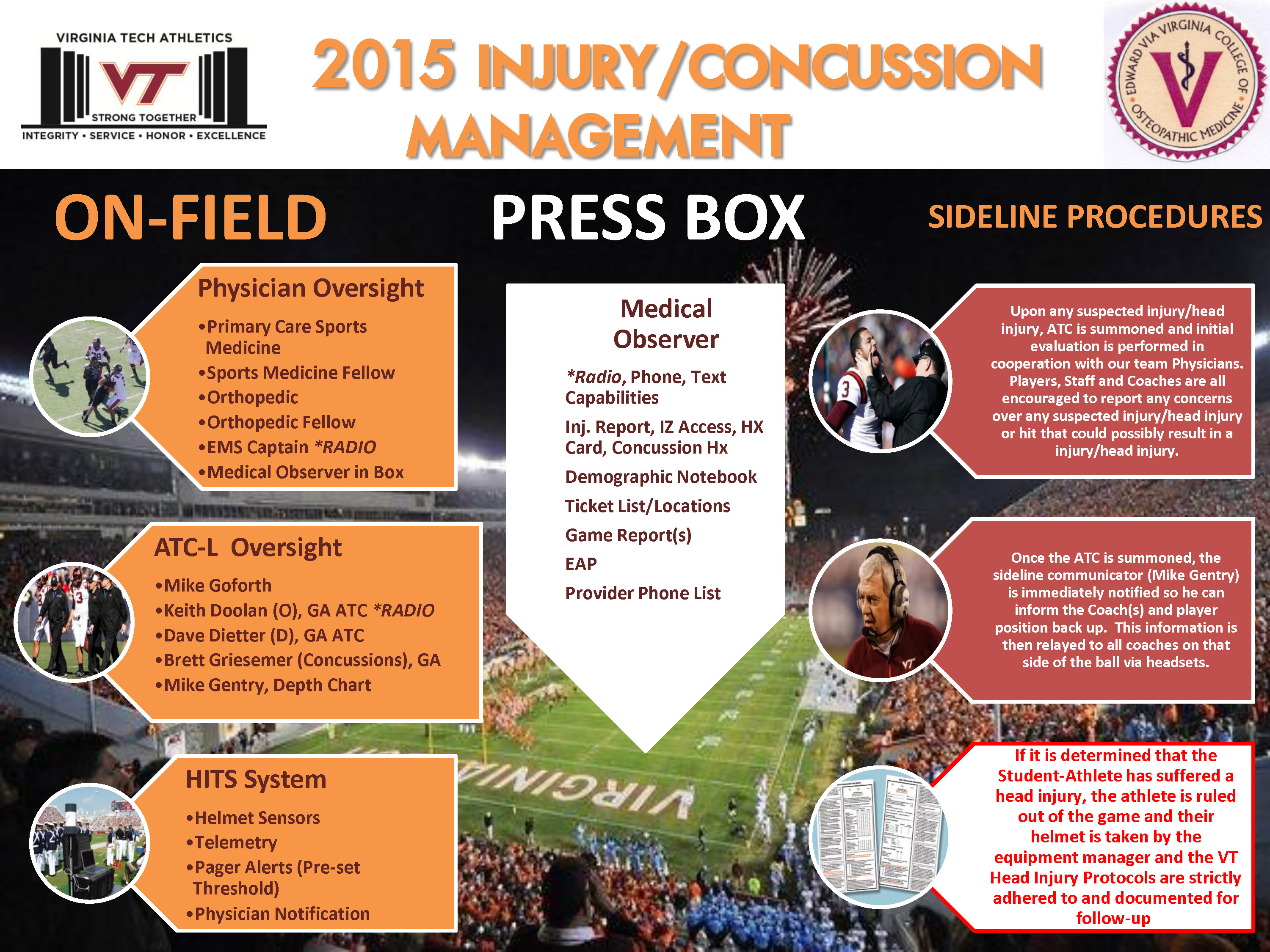
least three times last football season a Virginia Tech assistant coach stationed in the press box alerted medical personnel on the sideline to an injured player. The instances reminded Mike Goforth that as watchful as he and his staff try to be during a game, they cannot see everything.
That’s why Goforth, the Hokies’ associate athletic director for sports medicine, applauds the ACC for mandating that each conference team place either a physician or athletic trainer in the press box for every game.
Following similar stances by the Big Ten, Southeastern Conference and Pacific 12, ACC commissioner John Swofford announced Monday that league athletic directors had unanimously approved the measure.
“This team-specific medical observer will have the benefit of knowing the medical history of the players,” Swofford said, “because it will be someone who is involved with them on an ongoing and day-to-day basis. They will travel with the team and observe every game, home and away, conference and non-conference.”
The observers will not have stoppage power, in the form of a direct line to the game’s referee, but they will be connected with medical officials on the sideline.
In this time of bigger, stronger and faster athletes, of more violent contact, and of more scientific data on the enduring effects of brain trauma, the more precautions the better. You don’t want to encumber the game, or those who play it, but the harrowing tales of the last 20-plus years, involving athletes at all levels, make clear the sensibility of this measure.
Though a few meaningless weeks behind — it is the offseason, after all — on press box observers, ACC schools have long been on the leading edge of concussion protocol and research, and the University of Noth Carolina’s Dr. Kevin Guskiewicz serves on the NCAA’s concussion committee.
Brain trauma is most studied in Blacksburg, where Stefan Duma heads the Virginia Tech-Wake Forest School of Biomedical Engineering and Sciences. From safety ratings for helmets to sensors that warn of high-force collisions to a Department of Defense concussions study designed to aid athletes and military personnel, Tech’s academic research has been invaluable to Goforth and the medical team.
“We’re going to make this as proactive as we can,” Goforth said of the ACC policy, “and I think it will be a big help to us. …
“If you have the right culture around an athletic department, specifically the football program, this kind of thing already occurs. Last year on at least three occasions our coaches called down for me to look at somebody.”
Goforth declined to reveal the players involved but said the injuries involved a knee, concussion and ankle. Trainers on the field had noticed the first two, not the latter.
But coaches, or medical staff, can’t be expected to notice every possible injury. The game is too fast, especially with no-huddle, hurry-up offenses en vogue. Trainers are tending to players on the bench. Coaches are hatching strategy. Medical observers, perched on high and presumably equipped with binoculars and television replay, will be less distracted and more likely to notice anything amiss.
The ACC’s policy is only a week old, but Goforth already has created a one-page, game-day concussion protocol that includes the press-box observer. There’s a photo of Goforth examining the concussed Logan Thomas at the 2013 Sun Bowl and an edict that any player diagnosed with a head injury “is ruled out of the game and their helmet is taken by the equipment manager.”
An integral part of Frank Beamer’s football program since 1998, Goforth has decided that the Hokies’ press box watchdog will be an athletic trainer, since trainers have more frequent interaction with players than physicians and are more familiar with their medical histories. Moreover, Tech’s observer will be armed with not only medical background and insurance information for every player, but also the seat location of players’ parents – cell phone service in a crowded stadium can be spotty.
Such information used to be stashed in a trunk on the sideline. Upstairs it will be more easily accessible.
“You know Coach Beamer,” Goforth said. “Coach Beamer has never, ever put pressure on us about an injury. But he will pressure me about communicating with parents. It’s of utmost importance to him that Mom and Dad know what’s going on with that kid. Practice, game, whatever.”
On game day, Goforth also positions some Tech medical staff on the opponents’ sideline, where they operate an x-ray machine. The more eyes from the more angles the better, he figures, the same premise that inspired the Big Ten, SEC, Pac-12 and ACC — the Big 12 recently limited live contact drill to two days per week, including game day.
Goforth recalled Tech running back Lee Suggs’ torn ACL in 2001. With a clear view of the play, Goforth sensed the injury even before Suggs collapsed into a heap, and that knowledge informed his immediate treatment.
Indeed, for medical personnel, there’s no such thing as too much information
“I think we’ve got a lot of things in place,” Goforth said, “some good mechanisms to help us identify student-athletes that could be injured that we might not have seen. …
“If anybody can see how it happened, that gives us a clue about what might be wrong with them. Just to have another set of eyes that can say, hey I saw this person get rolled up on their right knee, so on and so forth, that’s a big help.”
ORIGINAL ARTICLE:
http://www.dailypress.com/sports/virginia-tech/dp-spt-teel-column-acc-medical-observer-20150726-column.html
